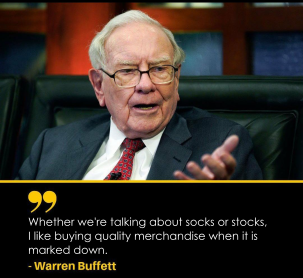What to do about the elephant in the room – markets? At times like this, it’s easy to get depressed and feel helpless. Engaged investors, as many of you are, might watch sliding stock prices and do uncomfortable mental arithmetic about their portfolios’ value. Even for those with international holdings, the lower Australian dollar is unlikely to offset the paper losses. It can feel overwhelming.
So how do we make sense of this? First off, the market does not know all. “Mr Market” is the confluence of millions of buyers and sellers on any given day, as legendary investor Ben Graham taught us. Those investors are influenced by monetary conditions, future expectations and what’s for lunch. Often sensible, they are fickle and prone to panic.
In late 2021 and early 2022 investors believed “everything was awesome,” buoyed in part by the enthusiasm of a cohort of new investors who had only ever seen markets go up. Today the apocalypse is nigh and “everything is terrible”. Mr Market has swung from thinking COVID is no big deal, inflation will fade and the economy is rock solid to “Houston, we have a problem”.
But remember, Mr Market is here to serve you, not the other way around. The market offers investors prices for slices of a business, shares of future earnings. No more, no less. Sometimes Mr Market is optimistic and offers a high price. Sometimes he is fearful and offers a low price. Long term investors are here to: 1) recognise those swings and 2) act upon them to improve returns/lower risk over the long term.
I don’t have a macroeconomic crystal ball. Be wary of those who claim to. Markets will rise and fall and there will be more bear and bull markets. It’s our job as investors to notice market excesses and act accordingly, ideally in advance of big moves. I get fearful when markets are cruising as they were last year. I try to be greedy now. Markets are under pressure and pessimism abounds–that’s usually a recipe for some value being on offer.
Instead of trying to pick whether the overall market will go up or down, think about how much you are being charged to buy a business’ future earnings. I love Buffett – partly because he looks like a cuddly teddy bear – but mainly because he simplifies complex ideas. Honest simplicity is admirable and “price is what you pay, value is what you get” is foundational.
The S&P 500 officially entered a bear market, more than 20% decline from the peak. Peter Warnes and Mark Lamonica have argued that things will likely get worse before they get better. I don’t have a strong opinion either way, but on balance the odds that we are at the low now and the market bottom has passed seem slim. But that does not mean jumping on the doom and gloom, sell everything bandwagon makes sense. Markets are showing signs of pressure and pessimism abounds, and that’s usually a good start for hunting value.
- Revisit investment goals.
a. What’s really important?
b. What are the constraints?
c. What is non-negotiable?
d. What is the appropriate risk tolerance? - Revisit Savings.
a. For those still in the asset accumulation phase, does it make sense to increase the level of savings/investment given the the reduction in portfolio values, and likely better future returns given markets have fallen?
b. Savings and investing more when portfolio values are down can provide a valuable counter-cyclical bias to wealth accumulation.
c. Is it possible to weather any volatility and uncertainty knowing you can work longer if needed? - Asset allocation.
a. What is appropriate given your personal goals and risk budget? It is worthwhile thinking about the appropriate asset allocation settings through the cycle as well. If price/fair value is anything to go by, now is likely a good time to be maintaining or raising exposure to equities, not cutting.
b. Increasing exposure to riskier asset classes when times are good, and optimism abounds (like 6 – 12 months ago) is likely to detract from longer-term returns. - Stay Invested.
a. Markets are cyclical and will have ups and downs. Invest accordingly.
b. Going to cash when sentiment is depressed is likely to drag on longer-term returns. - Behave countercyclically.
a. Plan to do this where possible. It may feel like the horse has bolted now, however, markets will continue to have ups and downs.
b. Even if it feels like you could’ve done better in hindsight – think about how you could better play the next cycle. - The selloff may provide opportunities.
a. Did irrational optimism creep into your portfolio? Did the rising price of securities hold more appeal than the fundamentals of the underlying assets itself?
b. Is there a window for selling some holdings to reinvest in better value/higher quality opportunities? Don’t sell because your security is down, but sell if it clear the fundamentals were not what you hoped. (ie, is it a good company?) - Invest in you!
a. Human capital is your own value and is your ability to work and produce an income, now and into the future. Education, training and experience deliver some outstanding returns on investment!

Reproduced from Morningstar, 7 lessons as we navigate turbulent markets, by Matthew Hodge, Director of Equity Research ANZ, written 16th June 2022.

Recent Comments